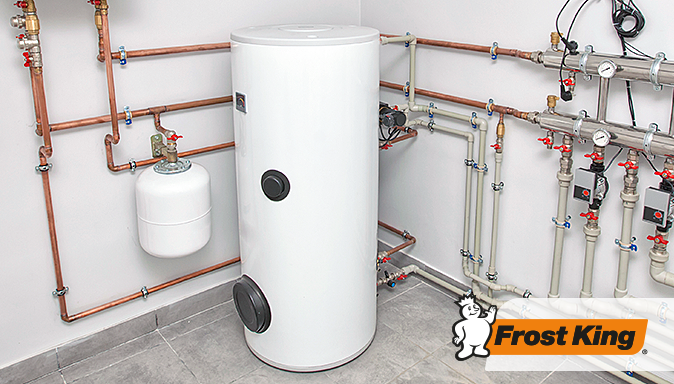Last February’s Big Freeze in Texas brought historically rare freezing temperatures and the threat of a power grid collapse to the Lone Star. The result was millions of households left without electricity and residential heating shortages that stranded people in their homes with no heat for days.
In a climate where homes are not built to withstand below-freezing temperatures and pipes are not insulated, this was a recipe for disaster. While grappling with the dangers of frigid temperatures, Texas homeowners also had to worry about pipes in their homes freezing and bursting. The news was flooded with images of burst pipes cascading water into people’s living rooms, causing millions of dollars worth of water damage. The crisis served as a grim reminder of how important it is to insulate hot and cold water pipes so the same disaster doesn’t strike your home.
Why Do Pipes Burst?
Before we explain how to insulate your pipes, let’s quickly review why pipes burst in the first place. Unlike most substances that contract when they get cold, water expands as it freezes— and in its frozen form it takes up more volume. This means that when water that is trapped in a pipe freezes, pressure builds and builds until it becomes so powerful that it breaks right out of the pipe.
Fortunately, simply wrapping pipes with insulation can stop your pipes from freezing. As Wired explains,
If you wrap some foam insulation around any exposed pipes, it does the same thing as your cooler or insulated drink cup. The insulation decreases the rate that energy is transferred from the hot thing to the cold thing through a thermal interaction. If you put a cold drink out on a table, energy is transferred into the drink to cause it to increase in temperature. Putting the drink in a cooler, on the other hand, increases the insulation and decreases the rate of energy transfer so that it takes longer for the drink to warm up.
For the foam insulation around a pipe, the water is warmer than the air, so this decreases the rate of energy transferred out of the water. Remember, if you remove enough thermal energy from the water, it will make a phase transition from a liquid to a solid—and that's the bad part. So, yes—insulate those pipes.
The Easy Solution to Frozen Pipes
Now that we’ve got the science lesson out of the way, let’s talk insulation. Frost King makes it easy to insulate pipes and avoid burst pipes and costly flooding. Our Tubular Foam Pipe Insulation and Self-Sealing Tees and Elbows slip over hot and cold water pipes easily to form a tight seal, and they’re self-sealing so all you have to do is press the adhesive on the slit edges together to seal. For step-by-step instructions, watch this video:
Other Ways to Prevent Pipes From Freezing
Uninsulated pipes can freeze when temperatures drop to 20 degrees Fahrenheit. If cold weather is heading your way and insulating exposed pipes is one of those projects you just haven’t crossed off your to-do list yet, you can try these stop-gap measures to avoid a frozen disaster:
• Turn faucets on so they drip slightly. The movement of water through your pipes should keep them from freezing.
• Leave sink cabinets open to allow warm air to circulate around the pipes.
• Set the heat to at least 55 degrees Fahrenheit when you’re not home.
• Keep the garage door closed, and keep interior doors open so warm air circulates from room to room.
